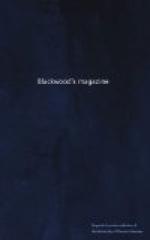[Footnote 1: The book of the farm. By Henry Stephens.]
Science is to practical skill in the arts of life as the soul is to the body. They are united as faith and works are in concerns of higher moment. As both, though separately good, must yet be united in the finished Christian, so the perfection of husbandry implies the union of all the lights of existing theoretical knowledge with all the skill of the most improved agricultural practice.
Though such is the belief of those scientific men who are able and willing to do the most for practical agriculture, who see most clearly what can be done for it, and the true line along which agricultural improvement may now most hopefully direct her course—yet with this opinion the greater part of practical men are still far from sympathizing. Some voices even—becoming every day more feeble, however, and recurring at more distant intervals—continue to be raised against the utility and the applications of science; as if practice with stationary knowledge were omnipotent in developing the resources of nature; as if a man, in a rugged and partially explored country, could have too much light to guide his steps.
In the history of maritime intercourse there was a time when the timid seaman crept from port to port, feeling his cautious and wary way from headland to headland, and daring no distant voyage where seas, and winds, and rocks, unknown to him, increased the dangers of his uncertain life. Then a bolder race sprung up—tall ships danced proudly upon the waves, and many brave hearts manned and guided them; yet still they rarely ventured from sight of land. Men became bewildered still, perplexed, and full of fear, when sea and sky alone presented themselves. But a third period arose—and in the same circumstances, men not more brave appeared collected, fearless, and full of hope. Faith in a trembling needle gave confidence to the most timorous, and neither the rough Atlantic nor the wide Pacific could deter the bold adventurer, or the curious investigator of nature.
And yet it was not till this comparatively advanced stage of the nautical art—when man had obtained a faithful guide in his most devious and trackless wanderings—when he was apparently set free from the unsteady dominion of the seas and of the fickle winds—and amid his labyrinthine course could ever and at once turn his face towards his happy and expectant home;—it was not till this period that science began to lend her most useful and most extensive aids, and that her value in the advancement of the sailor’s art began to be justly appreciated. The astronomer forthwith taught him more accurately to observe the heavens, and compiled laborious tables for his daily use. Geography and hydrography obtained higher estimation, and harbour-engineering and ship-building were elevated into more important separate arts, chiefly from their applications to his use. Nautical schools and




